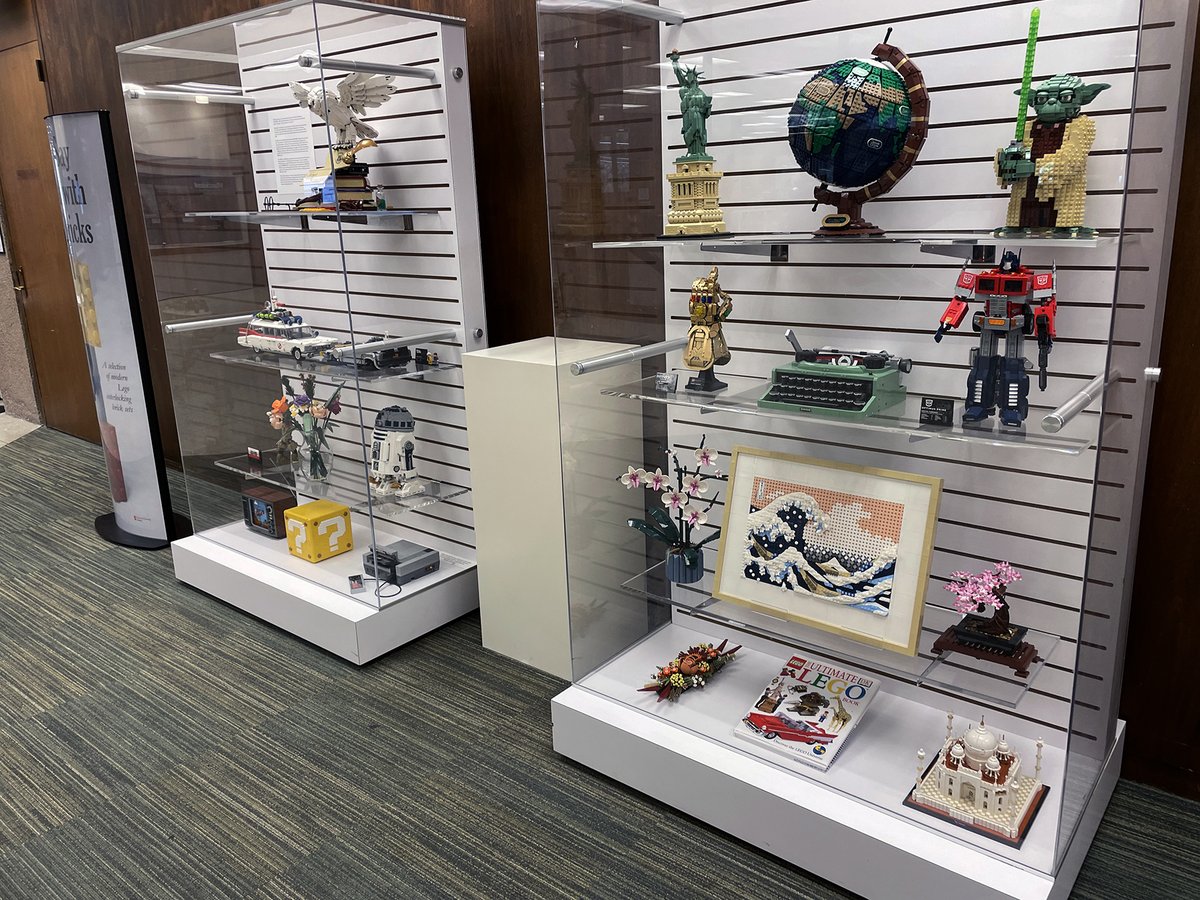Say it with Bricks
Page featured image content

Page main body content
June 15 – August 30, 2024
A selection of modern Lego interlocking brick sets
The Lego Group was started by Danish carpenter Ole Kirk Christiansen (1891-1958) in 1932 in Billund, Denmark. The name is derived from the Danish phrase "leg godt," which translates as "play well."
Although the company is now synonymous with their plastic interlocking bricks or "automated binding bricks," their original offerings were wooden toys, including vehicles and wheeled pull animals. They switched to plastic in 1947, and the standard brick made of acrylonitrile butadiene styrene was released in 1949.
In 1954, his son Godtfred Kirk Christiansen (1920-1995) thought of the concept of the "Lego System," which consisted of curated and specialized parts with instruction manuals. The first of these sets was released in 1955. Early kits had evocative names such as Small Store (1955), Church (1957), and Small House (1958). From these humble beginnings arose a legion of kits of ever-increasing complexity. Released in 2022, one of the largest kits ever produced was that of the Eiffel Tower, which stands over five feet (149 cm) tall and is made of over 10,000 pieces.
As of 2015, over 600 billion Lego pieces have been manufactured. Franchises as diverse as Batman and Pokémon have been licensed. The most expensive individual Lego is a gold C-3PO from the Star Wars franchise, which sold in excess of $200,000 USD. The Lego Group realizes approximately $200 billion USD per year, which includes profits from their various video game and film ventures. The first Lego Movie was released in theaters in 2014, grossing over $468 million USD.
This collection features a variety of mostly franchise-based Lego sets, including the Ecto-1 from Ghostbusters, the owl from Harry Potter, and the Infinity Gauntlet from Marvel’s Infinity series. It is graciously on loan from the library’s own Nick Olivieri, Access Services Manager, with the Access and Resource Sharing department.
